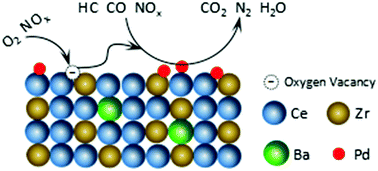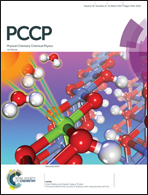Investigation on the structure–activity relationship of BaO promoting Pd/CeO2–ZrO2 catalysts for CO, HC and NOx conversions†
Abstract
Four different synthetic routes (co-precipitation, oxidation–precipitation, citric acid sol–gel and reversed microemulsion) are adopted to prepare barium modified Pd/CeO2–ZrO2 catalysts and their catalytic activity towards CO, HC and NOx conversions is studied. The surface and bulk properties of these catalysts are characterized via XRD, N2 adsorption, XPS, UV-Raman, H2-TPR, and in situ DRIFTS. The catalyst prepared via the co-precipitation method exhibits the optimum three-way catalytic behavior, which is mainly due to its superior redox ability, whereas the oxidation–precipitation synthesis renders the catalyst with the best homogeneity and thermal resistance. However, for the catalyst prepared via the sol–gel route, its worst NOx reduction capacity is verified by the scarce appearance of negatively charged Pd0–N![[double bond, length as m-dash]](https://www.rsc.org/images/entities/char_e001.gif) Oδ− species, which is related to the faster dissociation of NO based on in situ DRIFTS, and the abundance of surface CO–Pd+ species reveals its unsatisfactory deep oxidizability of the HC reactant.
Oδ− species, which is related to the faster dissociation of NO based on in situ DRIFTS, and the abundance of surface CO–Pd+ species reveals its unsatisfactory deep oxidizability of the HC reactant.



 Please wait while we load your content...
Please wait while we load your content...